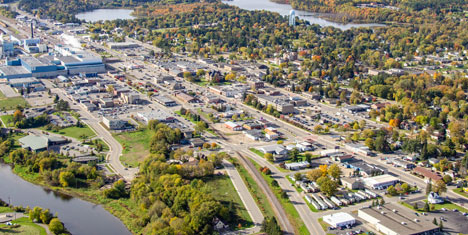What is Business Retention & Expansion, and Why Participate in BRE Visits?
Tuesday, November 03, 2020

Business retention and expansion...you might have heard this a time or two as a business owner or you might have been contacted to participate in a business retention and expansion (BRE) visit, but what exactly is BRE and why is it so important for businesses and economic development?
To illustrate this, we have taken this standard definition of private-sector customer retention and inserted it into what BRE is:
“Customer retention (business retention and expansion) is the activity that a selling organization (economic or workforce development agency) undertakes in order to reduce customer defections (loss of private sector businesses). Successful customer retention (business retention and expansion) starts with the first contact an organization (economic or workforce development agency) has with a customer (private sector business) and continues throughout the entire lifetime of a relationship. A company’s (market area's) ability to attract and retain new customers (through entrepreneurial development and business recruitment), is not only related to its product or services (community assets), but strongly related to the way it services its existing customers (existing private sector businesses) and the reputation it creates within and across the marketplace (trading area, region, province or state).”
Business retention and expansion outcomes have changed dramatically based on the current economic and global standing of the industries represented in a community. Today, many economic and workforce developers are focused on BRE to help businesses rebound from COVID-19 and be able to continue on with minimal long-term impacts to their business. A typical business retention and expansion program has three main components in which it operates:
1. Visitation. Visitation programs are particularly helpful in identifying at?risk companies, or those that are considering closing or relocating. Visits are centered on an interview with the firm’s president or other lead staff to learn how the economic development group (Itasca Economic Development) might help. The interview would include questions about the firm’s plans for expansion or relocation, workforce issues, new products, as well as high success points and pain points. After the interview, the data is collected and a follow-up plan is set in place to ensure all connections and assistance requests are taken care of.
2. Surveys. Periodically, a BRE survey is sent out to businesses to collect data on a larger, quicker, scale. This information will also feed into who the business should be connected with for in-person site visits or more hands-on meetings in the future. These surveys are typically brief and include questions about the current situation, economically.
3. Resources. The primary reason for BRE is to provide information, resources, and relationships to the businesses that are participating in the program. This could include but are not limited to: connections to workforce programs, connections to capital, state/legislative information, and a relationship with local economic development. A business retention and expansion program is developed and designed to ensure the longevity of a business within a particular community and region. Programs like this are meant to help stimulate the economy by aiding in the growth of current businesses within the area.
To learn more about BRE, or to participate in the BRE program, please visit itascadv.org or reach out to Kirstie McPherson, program specialist at kirstie@edeveco.com
Category: Business Retention and Expansion








